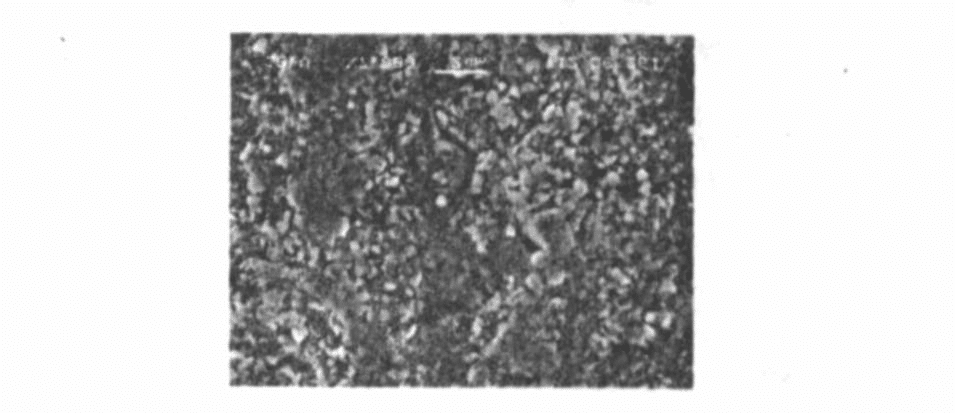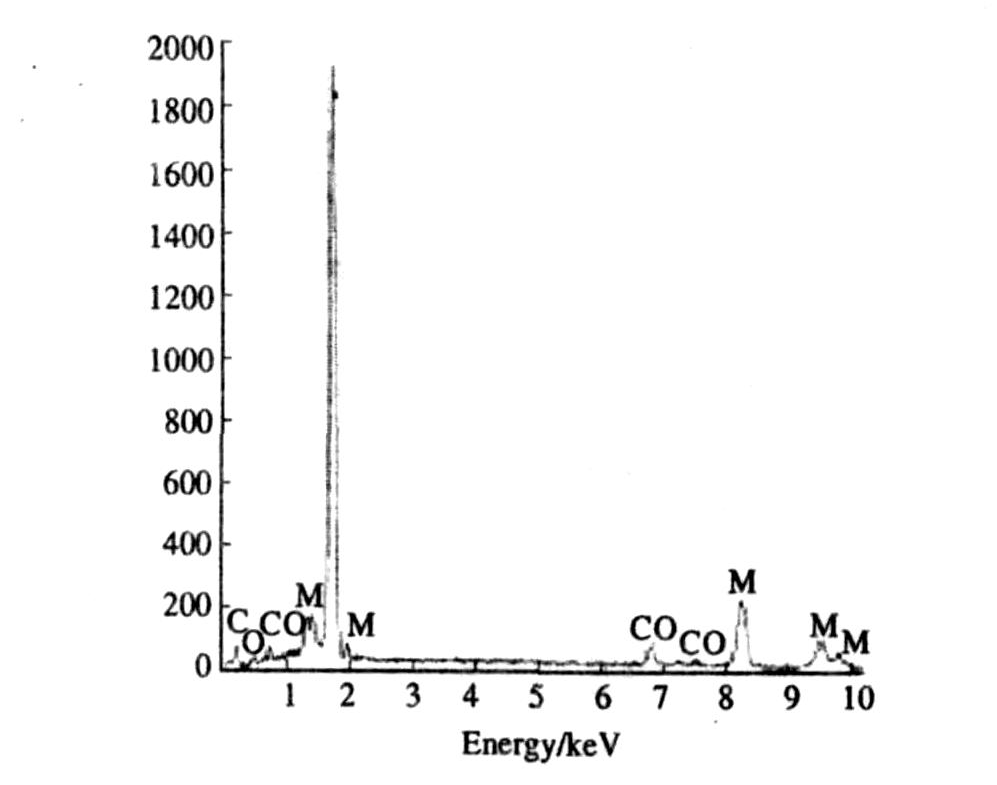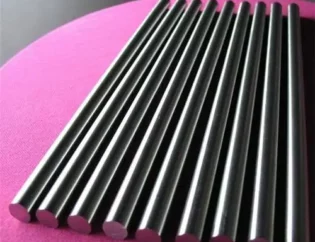Progressive die is the representative of precision stamping die. Its characteristics of high speed, high efficiency and high precision make it widely used in the production and manufacturing of precision micro electronic parts, and more and more medium and large parts are also manufactured by precision progressive die. However, this high-speed, high-precision, small and mass work requirements also pose a challenge to the strength and wear resistance of the die. Die wear will reduce product accuracy and die life. Shutdown grinding or die fracture will delay working hours, reduce production efficiency and increase production cost. Therefore, improving die strength and wear resistance means reducing cost and improving production efficiency.
Die material is the main factor determining die strength and wear resistance. There are many reasons for die failure, including die structure, die processing technology and die working conditions, but in the final analysis, the direct factor leading to die wear and fracture failure is the strength and toughness of the material itself. Cemented carbide materials are widely used in precision progressive dies because of their high strength, high toughness and high wear resistance. With the improvement of stamping speed, stamping accuracy and die life of precision progressive die, people have higher and higher requirements for cemented carbide materials.
Researchers at home and abroad are studying the wear failure mechanism, causes and wear-resistant measures of cemented carbide progressive die from various angles. Most of them study cemented carbide grading from the perspective of external macro factors die failure.
In this paper, the causes of fracture failure of wc2co cemented carbide progressive die are studied from the microscopic point of view through metallographic test and combined with the properties of the material itself
Study on wc2co cemented carbide
Wc2co cemented carbide is a composite material composed of refractory metal carbide and bonded metal cobalt produced by powder metallurgy. Cobalt is one of the iron group elements. It is a cemented metal for making cemented carbide. Due to the good lubricity and adhesion of CO to hard phase WC and the large solubility of hard phase WC in CO, wc2co cemented carbide has excellent properties such as high strength, high hardness and high wear resistance. The strength of cemented carbide is much higher than that of each single component. For this phenomenon, many scholars have made a very in-depth study and put forward some theoretical explanations that we basically agree with.
Dawihl and other scholars in Germany put forward the cemented carbide skeleton theory and its modified skeleton theory. They believe that during cemented carbide briquetting sintering, the carbide particles form an interconnected aggregate skeleton, and the gap of the skeleton is filled with mutually penetrating bonding phase Co. the properties of cemented carbide are caused by the carbide skeleton strengthened by co phase. The skeleton theory also holds that when the strength of carbide skeleton is sufficient,
The more uniform the distribution of CO phase, the higher the fracture resistance of the alloy; When the local co phase falls off, the skeleton of the hard phase will be easily damaged and the strength of the alloy will be reduced. Therefore, the content and distribution of CO phase have an important influence on the properties of cemented carbide.
Gurland et al. Put forward the film theory and believed that the carbide particles are surrounded by continuous co film, and the co film will play an important role in the strength of high adjacent carbide grains. The particle reinforcement theory proposed in China holds that the theoretical strength of carbide and co materials is actually very high. Only because of a large number of crack defects in the material, the actual strength of the material is far less than the theoretical strength. However, when the particle size of the two materials is reduced to a certain extent and mixed evenly, the probability of crack defects in the two groups will be doubled, and the actual strength of the two groups can be greatly improved. Therefore, as long as the distribution and particle size of WC grains and co layers are controlled, the theoretical strength of components can be brought into full play. Therefore, structural defects that do not conform to the composite concept, such as coarse carbide grains, CO pool and local loss of CO, will affect the exertion of particle reinforcement,
The strength and other properties of cemented carbide are reduced. From the above theoretical research, it can be seen that the content and distribution uniformity of CO phase materials have an important impact on the strength of wc2co cemented carbide materials. When the co phase materials are damaged or partially missing or partially stacked, the strength of cemented carbide will also be damaged.
metallographic examination of fractured punch
In this study, the punch broken under normal wear after high-speed blanking is taken as a sample. The sample comes from a precision parts manufacturing company in Shenzhen, and the punch material is cemented carbide cd750. At l EO 1530vp Electronics
The microstructure and composition of the samples were observed by scanning microscope and inca300 energy spectrometer. Figure 1 is the morphology of the broken punch. It can be seen from the figure that the broken mouth of the die is uneven and the fillet on the side of the die is displayed. The wear is very serious.

Fig. 1 fracture morphology of punch
Fig. 2 is the microstructure diagram of the central part of the fracture, in which massive WC particles are stacked compactly and orderly with clear edges and corners; Because the central part is not affected by wear and lubricant corrosion when the die is working, this study considers that the organizational structure and composition of the central part are exactly the same as that of the original material.

Fig. 2 microstructure of the central part of the fracture
Most cemented carbide precision progressive dies are ground. Figure 3 shows the working surface of the die. Compared with the base material shown in Figure 2, obvious grinding marks can be seen. The sharp edges and corners of WC block are ground flat and the surface is flat.

Figure 3 working surface of die
Fig. 4 is the microstructure of the die working surface at the die fracture. In the figure, the traces of grinding of WC block are greatly reduced, while the traces of falling off of WC block (part shown in elliptical frame) are very obvious, resulting in the exposure of WC block without grinding inside, and the working surface of the die is uneven and the boundary is fuzzy.

Fig. 4 microstructure of die surface at fracture
Fig. 5 is the energy spectrum analysis result of the central part of the fracture shown in Fig. 2, and Fig. 6 is the energy spectrum analysis result of the die working surface at the fracture shown in Fig. 4. From the comparison of energy spectrum peaks, it can be found that the peak value of W component in the working surface part of the die is significantly higher than that in the central part, while the peak value of CO component is lower than that in the central part. The relative detection of the content values of the two components also found that in the central part of the fracture, the content of W accounted for 75% and the content of CO accounted for 25%; On the working surface of the die at the fracture, the content of W is 91.93%, while the content of CO is only 8.07%. Since the microstructure and composition of the central part are exactly the same as that of the original material, it can be explained that the content of bonding phase CO on the working surface of the die at the fracture is significantly reduced compared with that of the original cemented carbide material.
Fig. 5 peak energy spectrum detection of die working surface at fracture

Fig. 6 peak value of energy spectrum detection at the center of fracture
fracture analysis
The direct cause of die fracture is the insufficient strength and toughness of the material. From the previous study on the properties of wc2co cemented carbide, it can be known that the strength and toughness of cemented carbide largely depend on the content of CO and bonding condition.
In the fracture convex pattern parts, the surface wear causes the loss of Co element, and the content of CO component is obviously reduced. The loss of CO destroys the continuity of WC hard phase skeleton, and the bonding state of WC block changes accordingly. When the loss of CO phase around the surface WC block reaches a certain degree, the bonding and composite reinforcement effect of CO relative to WC particles will be greatly weakened or even disappear, resulting in WC particles falling off from the material matrix and forming pits on the die surface, At the same time, the WC block inside the die without grinding is also exposed, which destroys the original hard phase skeleton structure; The exposed WC block with sharp edges and corners reduces the wear resistance of the cemented carbide and accelerates the wear of the cemented carbide; This also further accelerated the loss of Co. the falling off cycle of CO and WC particles continued to expand, resulting in the reduction of the toughness and strength of the material at this part until it reached the limit, so the die broke there.
Conclusion
The micro morphology of the working surface of the die at the fracture mouth was observed and compared with the original material morphology and the original grinding working surface of the die; The composition differences of CO and W in the working surface of the die at the fracture mouth and the original cemented carbide material are compared by EDS, and the following conclusions are obtained:
(1) The content and distribution uniformity of CO phase elements have an important impact on the properties of wc2co cemented carbide. The loss of CO will directly lead to the decline of the properties of wc2co cemented carbide.
(2) In the process of high-speed blanking, after the cemented carbide die is worn, the die surface is uneven and the skeleton structure is damaged due to the falling off of CO and WC particles.
(3) Under the condition of high-speed blanking, the die wear shows that the content of Co element is significantly reduced, and the bonding and composite strengthening effect of CO relative to WC hard phase is weakened, which reduces the strength and toughness of the material, accelerates the material wear, and leads to die fracture.









Kalıp alanında kullanılmasını tavsiye ettiğiniz karbür nedir. Yoğunluk bakımından GB kaç olmalıdır? Not: Pres baskı esnasında şekil verdiği malzeme pirinç’tir. Teşekkürler
Hello Muhsin,
Thanks for your comment.
We would recommend low cobalt around 6-8% for carbide drawing dies and high cobalt 15-25% for carbide cold heading dies.
The density is around 13.5-14.5 g/cm^3.
If you have any inquiries, feel free to contact us at [email protected]
Best regards,
Tim